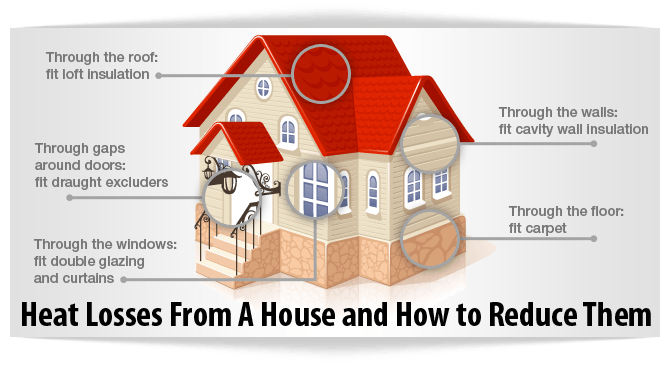Do your heating or cooling costs seem to be escalating? Is your house not as cool or as warm as you think it should be? Heat loss problem can be a frustrating and sometimes expensive problem. Keeping your home at a constant temperature may be a losing battle if your heat is escaping through your roof or other spaces that may be more difficult to detect.
The more heat that is lost from your home, the harder your furnace has to work in order to make up for that loss. That can result not only in higher heating costs and more energy used, but may also shorten the life of your furnace.
To find out if you do indeed have heat loss contact the energy supply company in your area. Many companies provide in-home consults and will do a heat loss audit on your home.
- Insulation
- Air leaks
- Windows and doors
- Chimneys
- Filters and vents
Insulation
One of the most common ways that a home loses heat is related to improper or insufficient insulation in your home’s attic. If you live in a region that has hard winters, it is easy to notice melting snow and ice on a roof. Make sure you have enough insulation, and the right type of insulation to keep the heat from escaping from your roof, via the attic. Proper attic insulation is the single most cost-effective way to prevent heat loss.
If you plan to inspect your attic yourself, make sure that you do it with the proper safety precautions. Wear gloves, a mask and eye protection. Place plywood sheets between the ceiling joists to prevent damage to the ceiling, and a potential fall.
The attic is not the only area of your home that can benefit from proper insulation. You may be losing heat through the wall or floor. Once the home is built, it can be difficult to increase the efficiency of insulation in walls, but it can be done by a licensed insulation contractor.
Air Leaks
There are many places for hidden air leaks in the structure of a home. Heat loss during winter months and heat entering the home during summer months can occur through windows and doors. Replacing windows can be an expensive undertaking, and the payback may not be worth your while. You can fix the existing windows and doors, making them more energy efficient by some do-it-yourself repairs such as caulking and weather stripping. If you decide to replace your existing windows and doors, make sure you choose energy efficient types.
Warm air can also escape through wall partitions. These can be sealed through the attic. Heat may be lost from leaking into a dropped ceiling above a closet, shower or cabinet. A chimney that is improperly sealed can also be a culprit for heat escaping from your home.
Check for gaps in the area where your dryer vent attaches to an outside wall. Make sure to inspect electrical outlets and plumbing under your sinks. These areas may seem small to you, but precious heat is escaping if there are gaps left open. These gaps can be repaired by purchasing foam sealers or by using the appropriate type of caulk to close up any gaps.
Check your filters. Heating and air conditioning units are dependent on air movement and air cannot flow through the system if filters are clogged.
Ventilation
Even though you want to keep all of the heat in, there is a need for ventilating your attic. Improper ventilation can also be a reason that you are losing heat through your roof. Your home’s attic vents should be checked to make sure they are open, and ventilation is adequate.
Be sure to contact Chills Air Conditioning for information and recommendations on how to best save money and energy with your current furnace. Regular furnace and air conditioning maintenance is always a good investment to keep your furnace running at its best.





